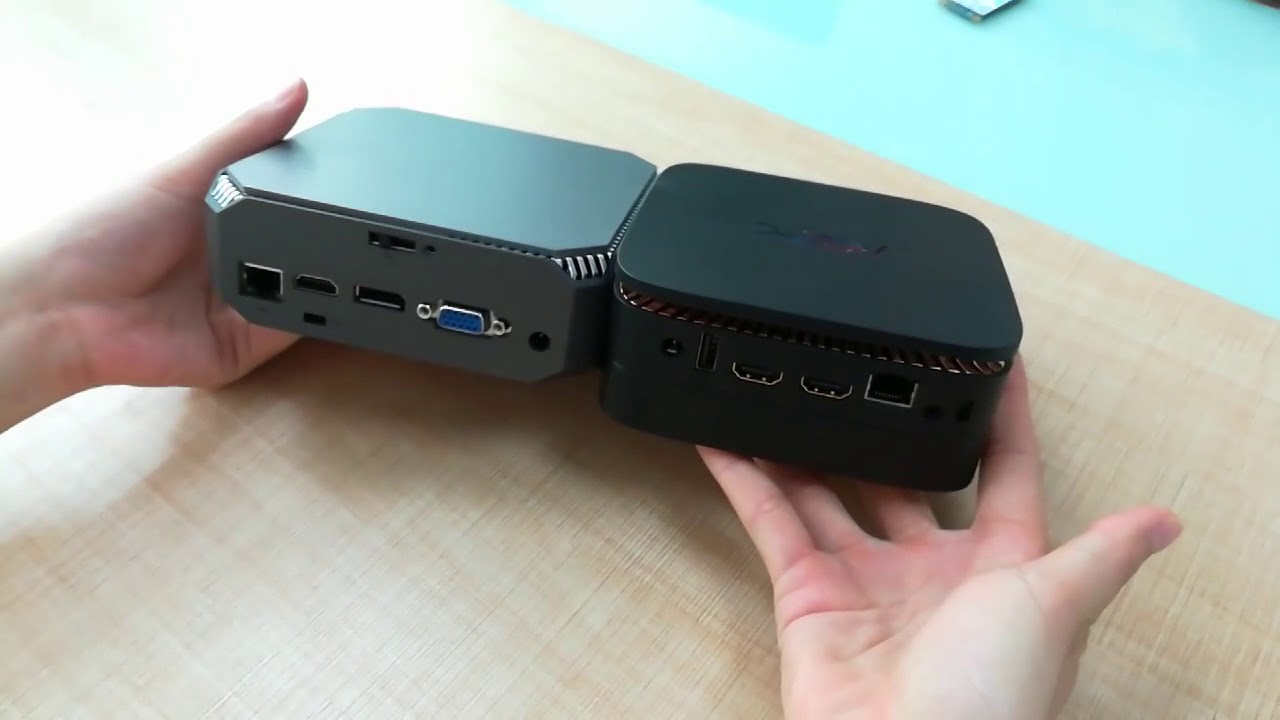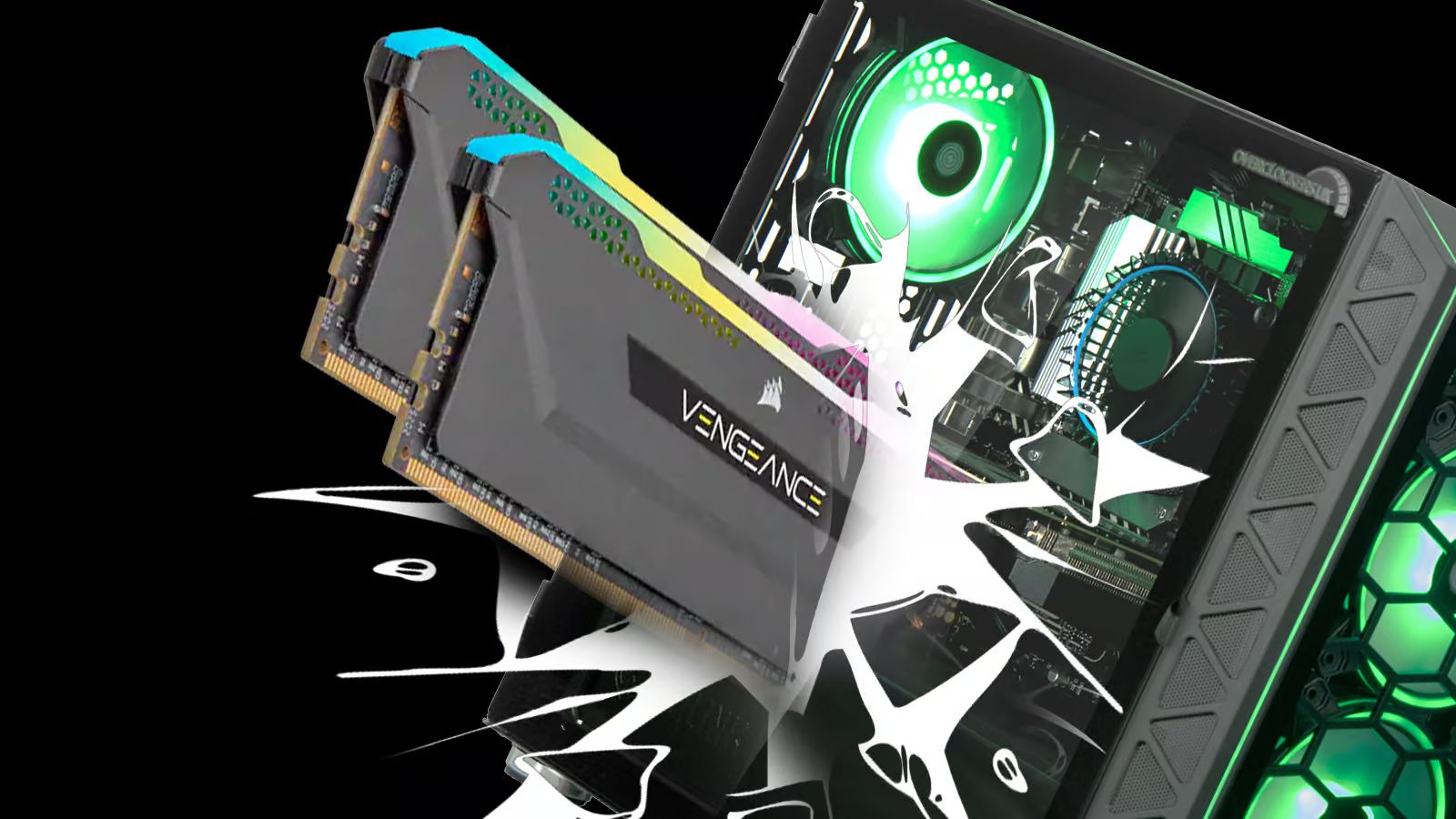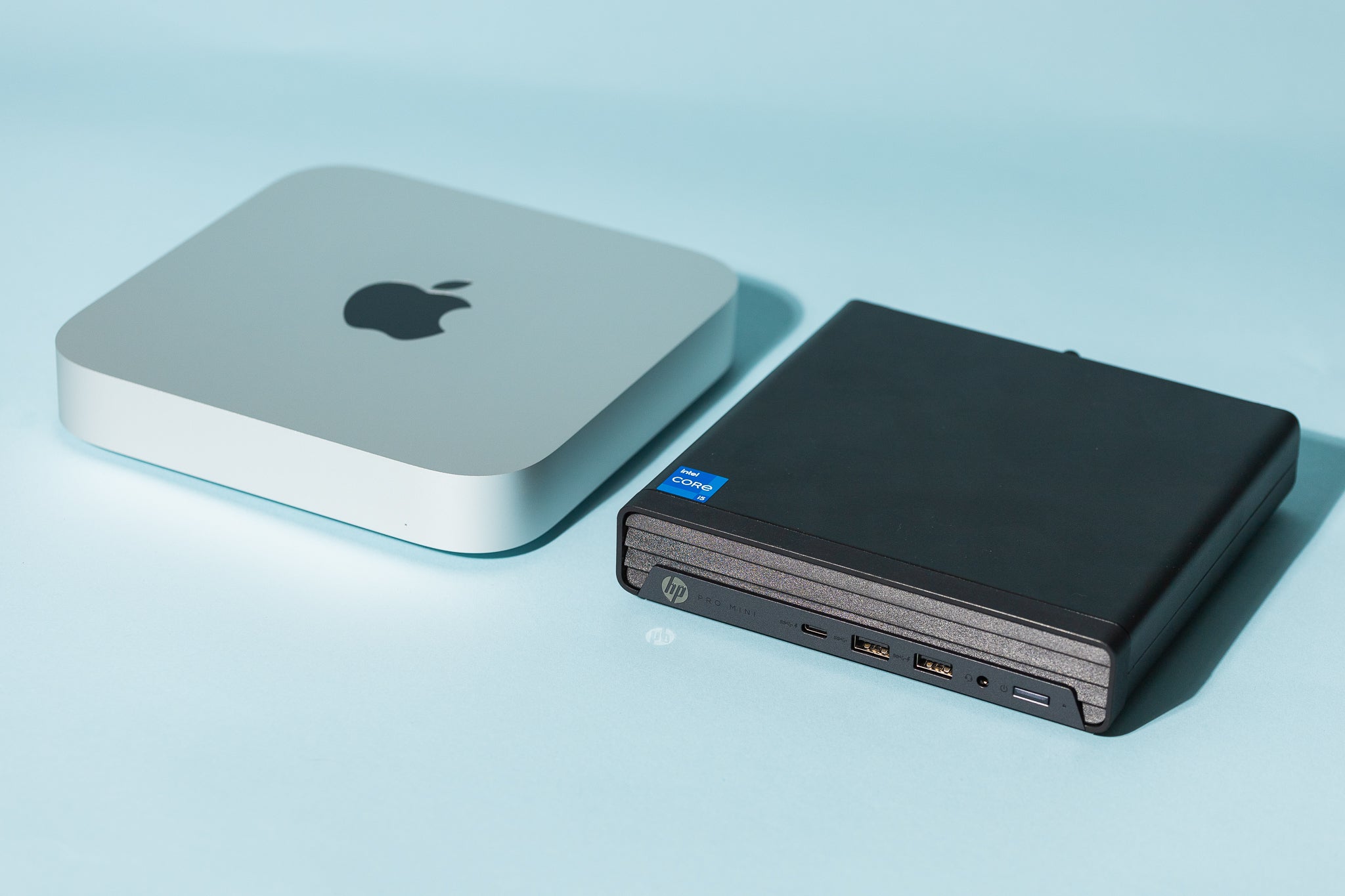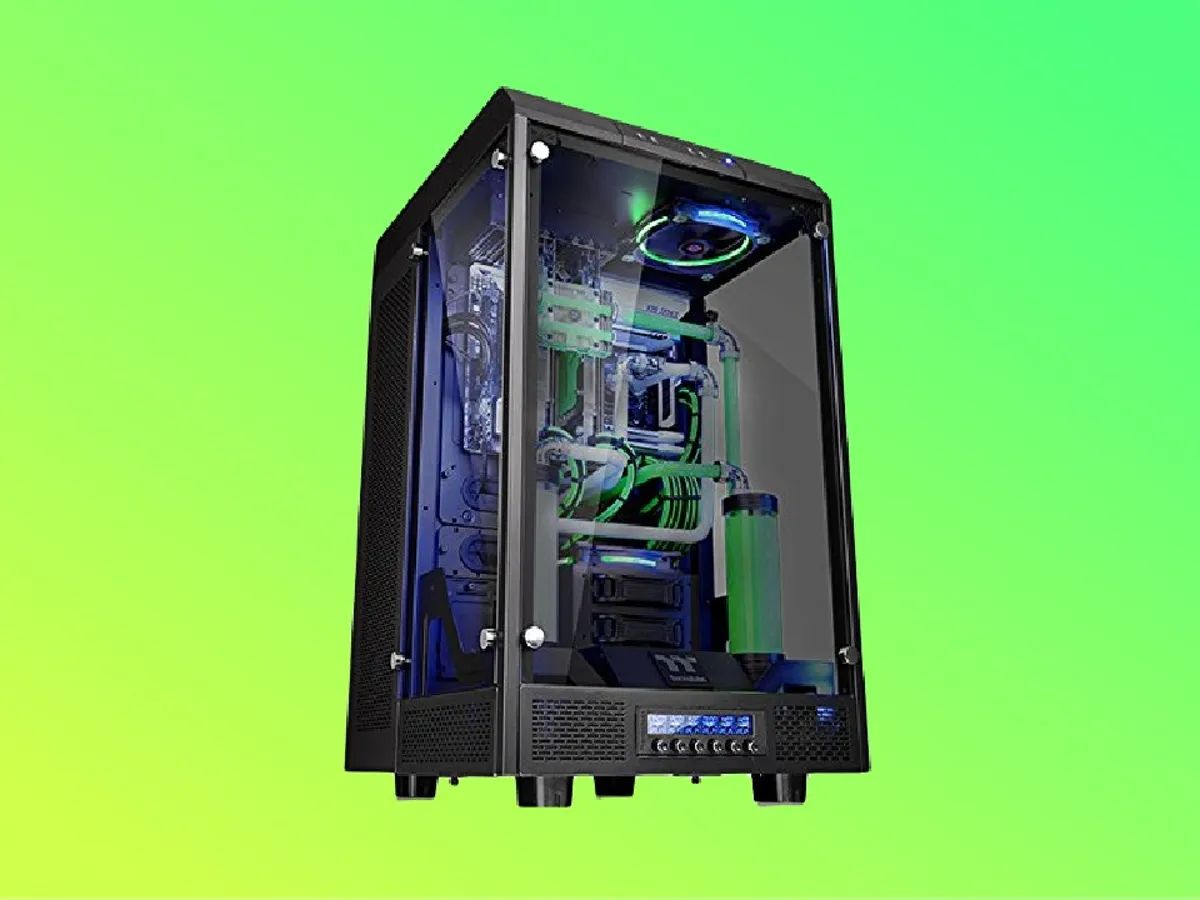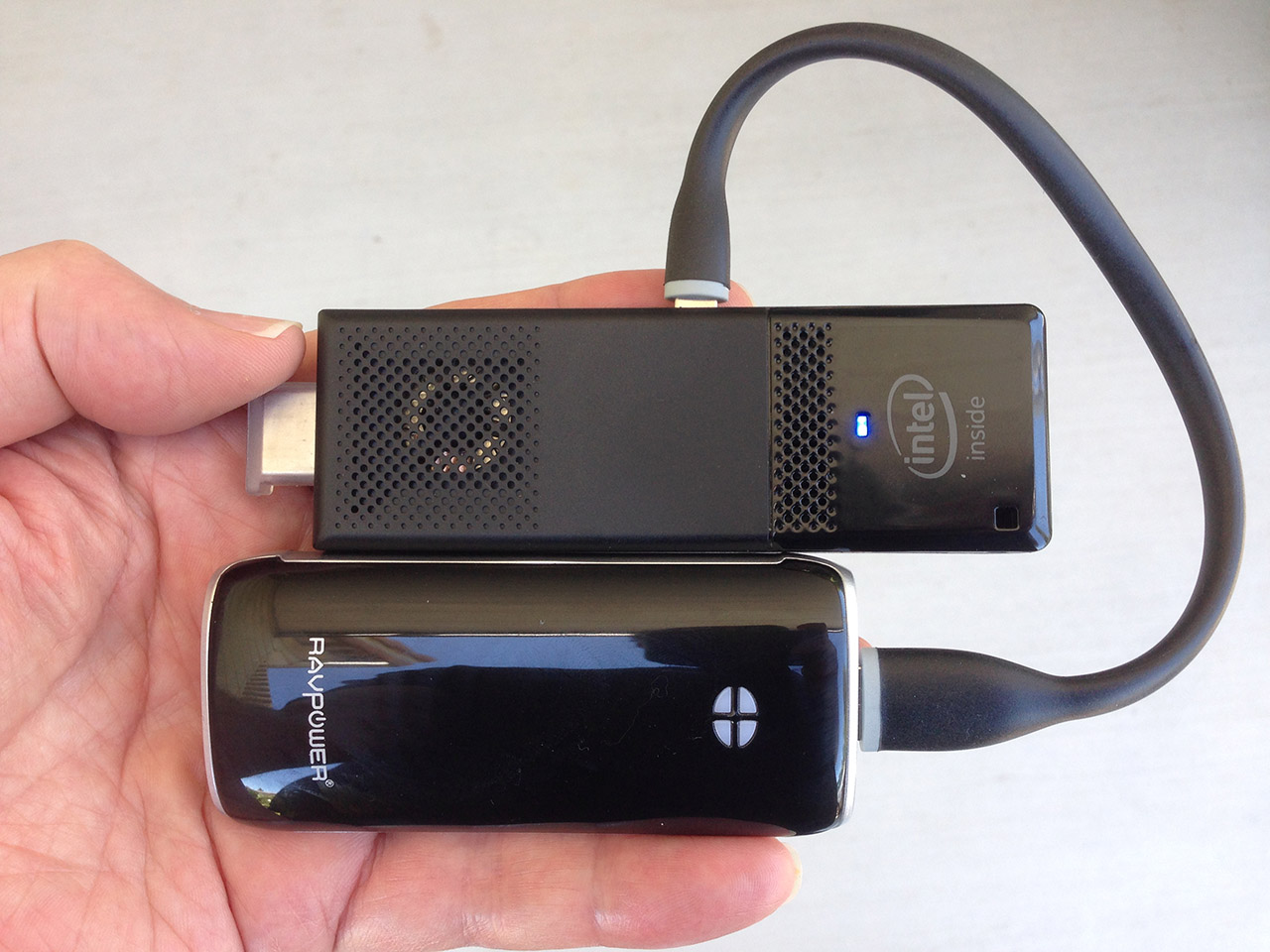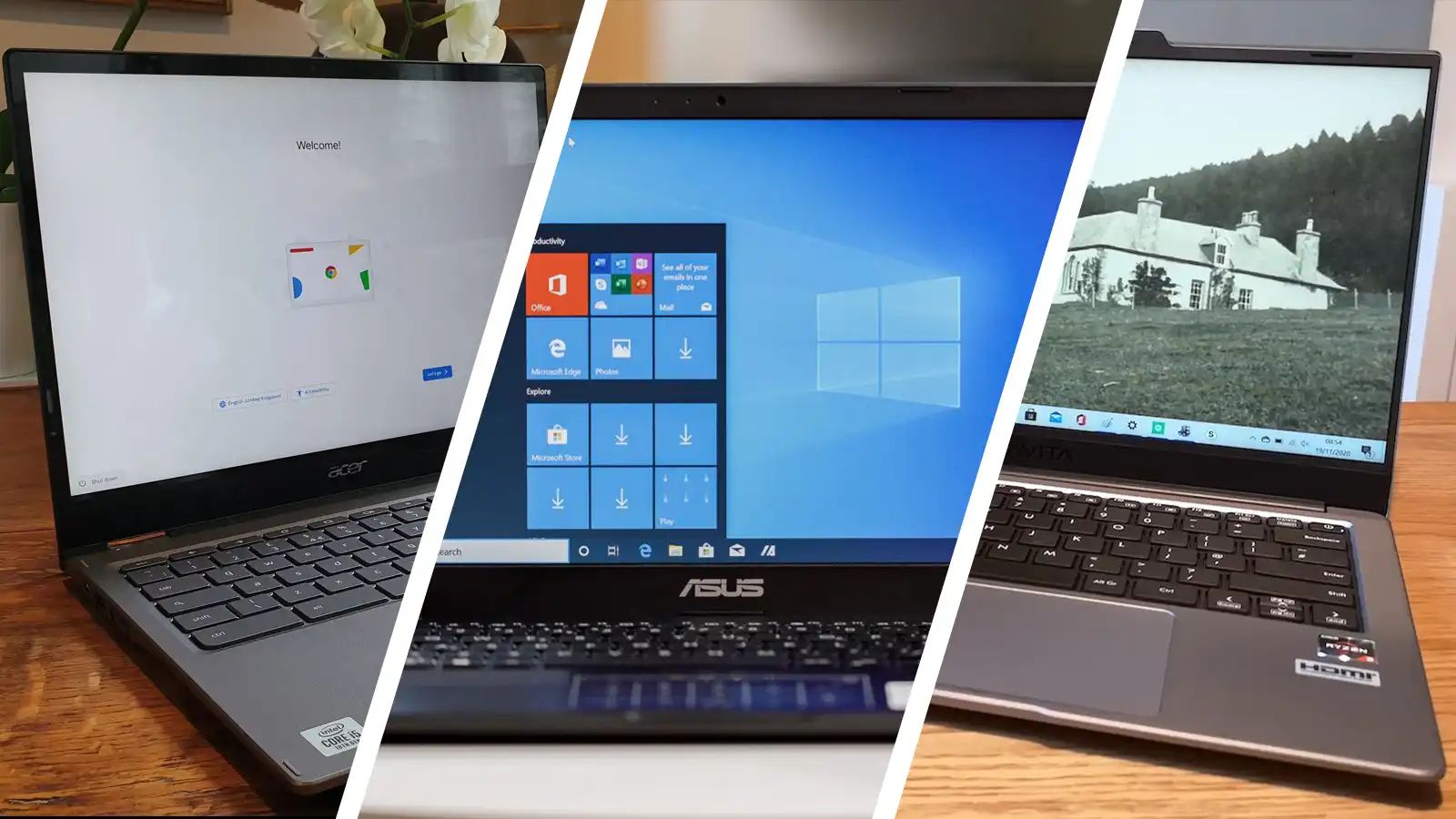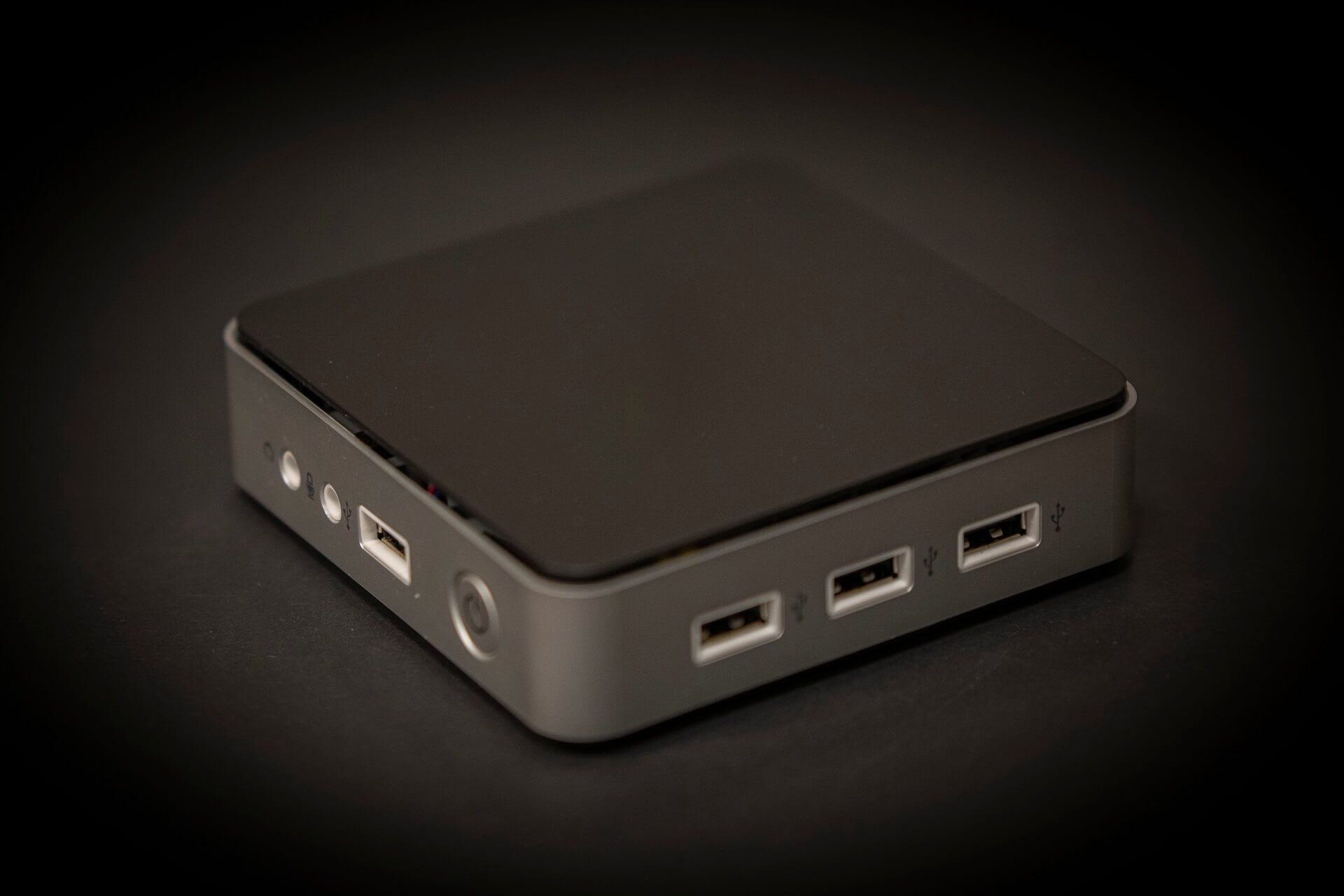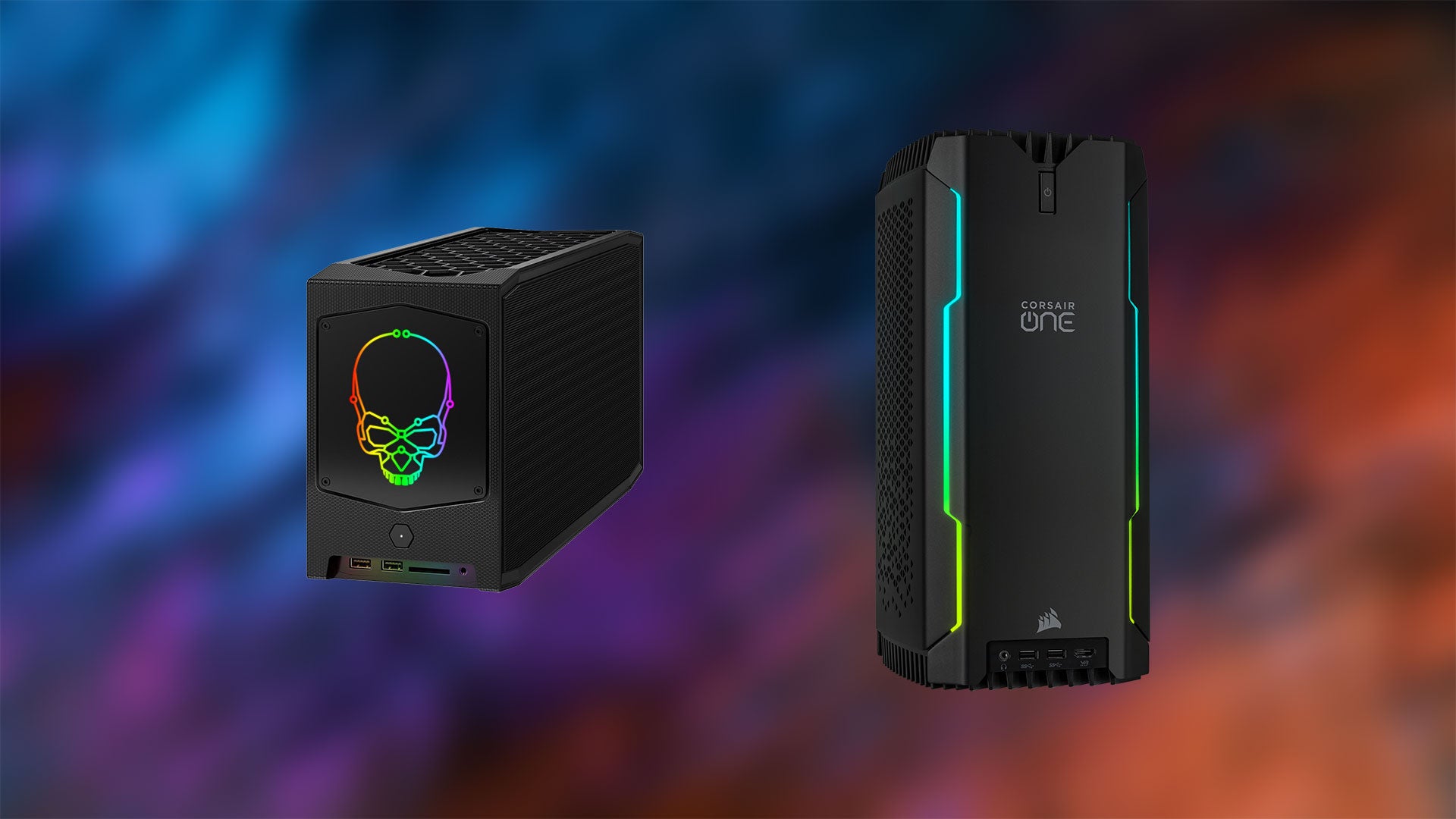Introduction
When it comes to mini PCs, AcePC has become a well-known name in the market. Known for their compact designs and impressive performance, AcePC offers a range of options to cater to different computing needs. Among their popular models, the AcePC AK2 Mini PC and AK1 stand out as attractive choices for users seeking a compact and powerful computing solution.
In this article, we will compare the AcePC AK2 Mini PC with its predecessor, the AK1, to help you determine which one is the better option for your specific requirements. We will delve into various aspects including design, hardware specifications, performance, operating system, connectivity, storage options, and price. By the end of this article, you will have a clearer understanding of the strengths and weaknesses of each system, allowing you to make an informed decision.
Before we dive into the comparison, let’s take a closer look at the design and build quality of these mini PCs.
Design and Build Quality
The design and build quality of a mini PC are crucial factors to consider, especially for those who value aesthetics and durability. Both the AcePC AK2 Mini PC and AK1 feature a sleek and compact design that can easily fit into any setup, whether it’s a home office or a small workspace. The AK2 Mini PC has a slightly smaller footprint compared to the AK1, making it even more space-efficient.
In terms of build quality, both models are well-constructed and feel sturdy. They have a solid metal chassis that not only provides durability but also helps with heat dissipation, ensuring reliable performance even during extended use. The compact size and lightweight design make them highly portable, allowing users to effortlessly move the mini PCs between different locations.
When it comes to port availability, the AK2 Mini PC and AK1 offer a similar range of connections. They both have multiple USB ports, including USB 3.0 for fast data transfer, as well as HDMI and VGA ports for connecting to external displays. Additionally, they feature an Ethernet port for a stable and high-speed wired internet connection.
One notable design difference between the two models is the placement of the power button. The AK2 Mini PC has a touch-sensitive power button located on the top panel, giving it a sleek and minimalistic look. On the other hand, the AK1 has a physical power button on the front panel, which may be preferable for users who prefer a more tactile experience when powering on the device.
Overall, both the AcePC AK2 Mini PC and AK1 boast impressive design and build quality, with sturdy constructions and sleek aesthetics. The slight differences in size and power button placement may be the deciding factors for users who have specific preferences regarding portability and tactile feedback.
Hardware Specifications
The hardware specifications of a mini PC greatly impact its performance capabilities. Let’s take a closer look at the specifications of the AcePC AK2 Mini PC and AK1 to determine their respective strengths and weaknesses.
The AcePC AK2 Mini PC is equipped with an Intel Celeron J3455 quad-core processor clocked at 1.5 GHz with a turbo boost up to 2.3 GHz. It comes with 4GB of DDR3 RAM and a 64GB eMMC storage. The AK2 Mini PC also supports expandable storage through an M.2 SSD slot and a 2.5-inch SATA drive bay, allowing users to add more storage space as needed. Graphics are powered by an Intel HD Graphics 500 chipset, which provides smooth visuals for multimedia and light gaming tasks.
On the other hand, the AcePC AK1 is powered by the slightly older Intel Celeron J3455 quad-core processor clocked at 1.5 GHz with a turbo boost up to 2.3 GHz. It also comes with 4GB of DDR3 RAM but offers a larger 64GB eMMC storage. Similar to the AK2 Mini PC, the AK1 supports expandable storage through an M.2 SSD slot and a 2.5-inch SATA drive bay. Graphics-wise, it features the same Intel HD Graphics 500 chipset.
Both mini PCs support 4K Ultra HD video playback, providing users with exceptional visuals for multimedia content. They also feature dual-band Wi-Fi (2.4GHz/5GHz) for seamless internet connectivity, as well as Bluetooth 4.2 for connecting peripherals wirelessly.
While the hardware specifications of the AcePC AK2 Mini PC and AK1 are quite similar, the AK2 Mini PC has a slight advantage in terms of storage options. The availability of an M.2 SSD slot and a 2.5-inch SATA drive bay allows for more flexibility in expanding the storage capacity, which can be advantageous for users who require additional space for large files, media libraries, or software installations.
In the next section, we will dive into the performance comparison of the AcePC AK2 Mini PC and AK1, to see if there are any notable differences between the two.
Performance Comparison
In terms of performance, the AcePC AK2 Mini PC and AK1 offer similar capabilities due to their identical chipset and RAM capacity. Both models are capable of handling everyday computing tasks smoothly, such as web browsing, document editing, video streaming, and light multitasking.
The quad-core Intel Celeron J3455 processor, paired with the Intel HD Graphics 500 chipset, ensures smooth video playback and basic gaming performance. Both mini PCs are capable of streaming and playing 4K Ultra HD content without any noticeable lag or stuttering.
With 4GB of DDR3 RAM, these mini PCs provide sufficient memory for multitasking, allowing users to have multiple applications and browser tabs open simultaneously. While 4GB may be sufficient for most everyday tasks, users who require more intensive multitasking or run memory-hungry software might find it beneficial to upgrade the RAM to 8GB or higher.
It is important to note that due to their compact size and low-power processors, these mini PCs are not designed for heavy-duty tasks such as video editing, 3D rendering, or gaming with high-end graphics requirements. However, they excel in serving as efficient and reliable computing solutions for productivity and entertainment purposes.
Overall, the AcePC AK2 Mini PC and AK1 offer similar performance capabilities, thanks to their shared hardware specifications. They are well-suited for everyday tasks and multimedia consumption, providing a seamless and responsive user experience.
Next, let’s explore the differences in the operating system and software that come pre-installed on the AcePC AK2 Mini PC and AK1.
Operating System and Software
Both the AcePC AK2 Mini PC and AK1 come pre-installed with the Windows 10 operating system, providing users with a familiar and user-friendly interface. Windows 10 offers a wide range of features and compatibility with various software applications, making it a versatile choice for different computing needs.
In addition to the operating system, both mini PCs come with a selection of pre-installed software to enhance the user experience. These may include basic productivity software such as a web browser, office suite, media player, and antivirus software. However, it is important to note that the specific software offerings may vary depending on the variant or seller.
As Windows 10 is a widely-used operating system, users have the flexibility to install their preferred software and customize the mini PC to suit their specific needs. Whether it’s productivity tools, creative software, or entertainment applications, users can easily find and install a wide range of software from the Microsoft Store or third-party sources.
Both the AcePC AK2 Mini PC and AK1 provide a seamless and user-friendly experience with the Windows 10 operating system, allowing users to enjoy a vast array of software options and customization possibilities.
In the next section, let’s explore the connectivity and ports offered by the AcePC AK2 Mini PC and AK1.
Connectivity and Ports
Connectivity options and available ports play a crucial role in the versatility and functionality of a mini PC. Let’s take a closer look at the connectivity features and port options offered by the AcePC AK2 Mini PC and AK1.
Both the AcePC AK2 Mini PC and AK1 come with built-in dual-band Wi-Fi (2.4GHz/5GHz) connectivity. This allows for seamless and high-speed wireless internet access, ensuring smooth streaming, online gaming, and browsing experiences. Additionally, the inclusion of Bluetooth 4.2 enables users to connect compatible wireless peripherals such as keyboards, mice, and headphones.
When it comes to physical ports, both mini PCs offer a similar range of connectivity options. They feature multiple USB ports, including USB 2.0 and USB 3.0 ports, enabling users to connect various peripherals such as external hard drives, printers, and other USB devices. HDMI and VGA ports are also available, allowing for connection to external monitors or TVs for extended display or multimedia purposes.
Furthermore, both models include an Ethernet port, providing users with the option for a stable and reliable wired internet connection for high-bandwidth activities or when Wi-Fi is not available. This is particularly useful in office or home setups where a wired connection is preferred for increased speed and reliability.
The availability of headphone and microphone jacks allows users to connect their audio devices directly to the mini PCs, eliminating the need for additional adapters or dongles. This is especially useful for those who frequently engage in video conferences, multimedia playback, or gaming with headphones and microphones.
In summary, both the AcePC AK2 Mini PC and AK1 offer a comprehensive set of connectivity options and ports. Users can enjoy seamless wireless connectivity, ample USB ports for peripheral connections, HDMI and VGA ports for external display support, as well as headphone and microphone jacks for audio devices.
Next, let’s move on to the storage options available on the AcePC AK2 Mini PC and AK1.
Storage Options
The storage capacity and options of a mini PC are crucial for storing files, media, and applications. Let’s explore the storage options available on the AcePC AK2 Mini PC and AK1 to determine their suitability for your needs.
The AcePC AK2 Mini PC comes with 64GB of eMMC storage, providing ample space for basic computing tasks. However, what sets the AK2 Mini PC apart is its expandable storage options. It features an M.2 SSD slot, allowing users to add a high-speed solid-state drive for faster data access and improved overall system performance. Additionally, it offers a 2.5-inch SATA drive bay, which enables users to install a traditional hard drive or SSD for additional storage capacity.
Similarly, the AcePC AK1 also comes with 64GB of eMMC storage, offering sufficient space for everyday use. Like the AK2 Mini PC, the AK1 also supports expandable storage options. It features an M.2 SSD slot for adding a solid-state drive and a 2.5-inch SATA drive bay for installing additional storage devices.
These expandable storage options provide users with the flexibility to customize the storage capacity according to their specific needs. Whether you require extra space for storing large media libraries, extensive software installations, or working with large files, the ability to add an SSD or extra hard drive can be immensely beneficial.
It is worth noting that the expandable storage options do require additional purchases of the SSD or hard drive, which may increase the overall cost of the mini PCs. However, the added flexibility and potential for increased storage make it a worthwhile investment for users who require more storage space.
In the next section, let’s compare the prices of the AcePC AK2 Mini PC and AK1 to determine which offers better value for money.
Price Comparison
When it comes to purchasing a mini PC, price is often a critical factor influencing the decision-making process. Let’s compare the prices of the AcePC AK2 Mini PC and AK1 to help you determine which offers better value for money.
The AcePC AK2 Mini PC typically comes at a slightly higher price point compared to its predecessor, the AK1. The slight increase in price can be attributed to the AK2 Mini PC’s improved hardware specifications, including a more compact design, expandable storage options, and enhanced performance capabilities.
However, it’s essential to consider the value offered by each model in relation to your specific requirements. The expandable storage options of the AK2 Mini PC can be a significant advantage for those in need of additional storage space, such as individuals working with large files or extensive media libraries. If storage flexibility is a key priority for you, the AK2 Mini PC may be a worthwhile investment.
On the other hand, the AK1 still offers solid performance and functionality at a slightly lower price point. It is a suitable option for those with more basic computing needs or who want to save some money while still enjoying the benefits of a mini PC.
Ultimately, the choice between the AcePC AK2 Mini PC and AK1 will depend on your specific requirements and budget. Consider the features, hardware specifications, and expandability options of each model in relation to your computing needs and make an informed decision based on the value they offer for the price.
With the price comparison in mind, let’s conclude the comparison between the AcePC AK2 Mini PC and AK1.
Conclusion
After comparing the AcePC AK2 Mini PC and AK1, it is evident that both models offer impressive performance and functionality for their respective price points. Let’s summarize their key features and considerations to help you make a well-informed decision:
The AcePC AK2 Mini PC stands out with its more compact design, expandable storage options, and slightly improved hardware specifications. It offers the flexibility to upgrade the storage capacity with an M.2 SSD and additional 2.5-inch SATA drive, making it an excellent choice for users who require ample storage space for large files or media libraries. It comes at a slightly higher price point but offers enhanced functionality and storage flexibility.
The AcePC AK1, on the other hand, delivers solid performance with a slightly lower price tag. It features the same processor and graphics capabilities as the AK2 Mini PC, making it suitable for everyday computing tasks and multimedia consumption. It provides expandable storage options with an M.2 SSD slot and a 2.5-inch SATA drive bay, allowing users to add more storage space as needed. The AK1 is a cost-effective option for those on a budget or with more basic computing needs.
When making a decision between the AcePC AK2 Mini PC and AK1, consider your specific requirements, budget, and preferences. If storage flexibility and compact design are essential to you, the AK2 Mini PC is worth the investment. If you prioritize affordability without compromising solid performance, the AK1 is a great choice. Whichever model you choose, both offer reliable performance within the mini PC category.
In summary, the AcePC AK2 Mini PC and AK1 are both commendable options for those seeking a compact and powerful computing solution. Determine your priorities and budget, and select the mini PC that best aligns with your needs and preferences. Whether you opt for the expandable storage and compact design of the AK2 Mini PC or the affordability of the AK1, you can enjoy reliable performance and functionality for everyday computing tasks.







